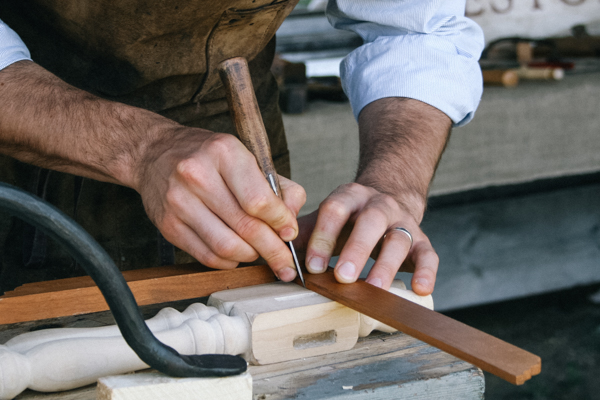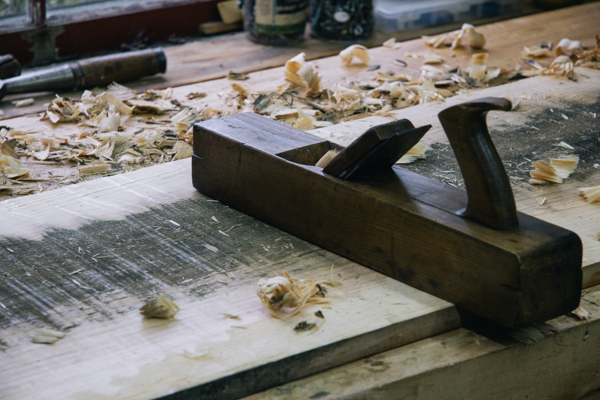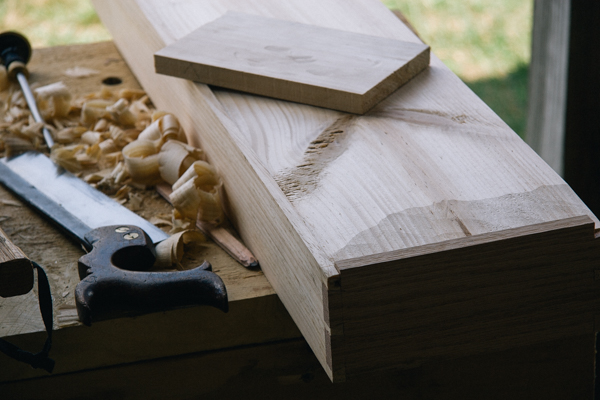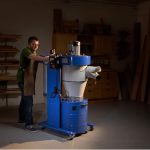We may receive a commission when you use our affiliate links. However, this does not impact our recommendations.
I recently had someone tell me that they thought I was a particular and precise individual. This caught me off guard because that‘s not the way I think of myself. My standard for “precise” woodworking was set in my days studying luthiery. The position of fret slots, the multiple angles to adjust on the compound dovetail neck joint, troubleshooting action problems… aye, aye, aye. The list goes on. Although it was good to have that as a foundation for my training, it’s not the way I enjoy working.
When I began carefully studying period furniture, it became readily apparent that the only similarity between my luthier training and pre-industrial cabinetmaking was the material itself. The efficiency of working by hand with its variation of surface refinement opened my eyes to new ways of working wood. It was a liberating moment for me.
I’ve heard too many times that working by hand is “hard” and “arduous.” I don’t believe that for a second. Even the most unathletic of folks like myself can build furniture without electrified or motorized tools by keeping their edges sharp and selecting the right tool for the task. Coarse work needs a coarse tool. (Froe or axe, maybe!?) Reserve your fine tools for fine work only. I’ve heard too many stories about folks going at rough-sawn lumber with a smoothing plane. That’s nuts.
Before the advent of woodworking machinery, uniformity of surface on both primary and secondary areas was pretty rare. Although there are always exceptions, the vast majority of handmade items reveal an extreme economy of labor. Especially in New England where I’m from, the undersides and backs are left astonishingly rough from the fore plane. (That’s the scalloped surface antique dealers are looking for.) So, if you are trying to build historically informed pieces efficiently, be at peace with rough and unfinished secondary surfaces.
I recall an amusing moment at a demonstration I was doing one time where I was fitting the bottom into a sliding till I made. An engineer/architect from the crowd was watching on with befuddlement at my utilitarian approach to work. After a couple test fits, I was able to take a final plane pass in order to slide the bottom all the way home into the groove. “There. Good enough”, I said. “Good enough!?” the engineer audibly objected. I nodded. “Good enough. It fits, doesn’t it?”
Ed note: If you’re interested in pre-Industrial woodworking, you might find helpful Bill Anderson’s new video “Joinery Handplanes,” available as a DVD or as a download.
Here are some supplies and tools we find essential in our everyday work around the shop. We may receive a commission from sales referred by our links; however, we have carefully selected these products for their usefulness and quality.













I was down graded in a recent competition because I did not “finish” the underside of a side table. Like my forefathers I exhibit an exterior view of my creations, the out of sight pieces still belong to me, marks, notes and measurements accepted.
Good enough is usually to good. I am from a Mech Design background. I have had to deal with extremes. Micron and half inch tolerances. I am ashamed to say that some of my drawings had +/- .125″ on a 25ft weldment…RIGHT. Also in Mech there is a saying,”It is time to shoot the engineer and go to production.” I see you have reached a point of equilibrium!
Hand tools are an essential part of any woodworking project, but I’m not into the self flagellation of ripping out and planing off 400 board feet of oak shelving. If you’re satisfied with a glacial pace on a jewelry box, more power to ya. Personally, I need to get my stuff done before I apply for medicare.